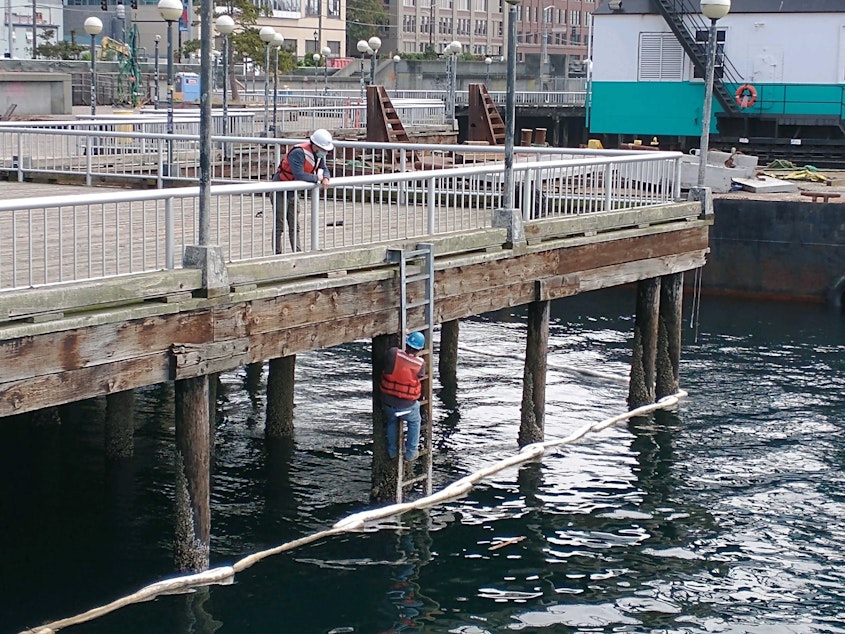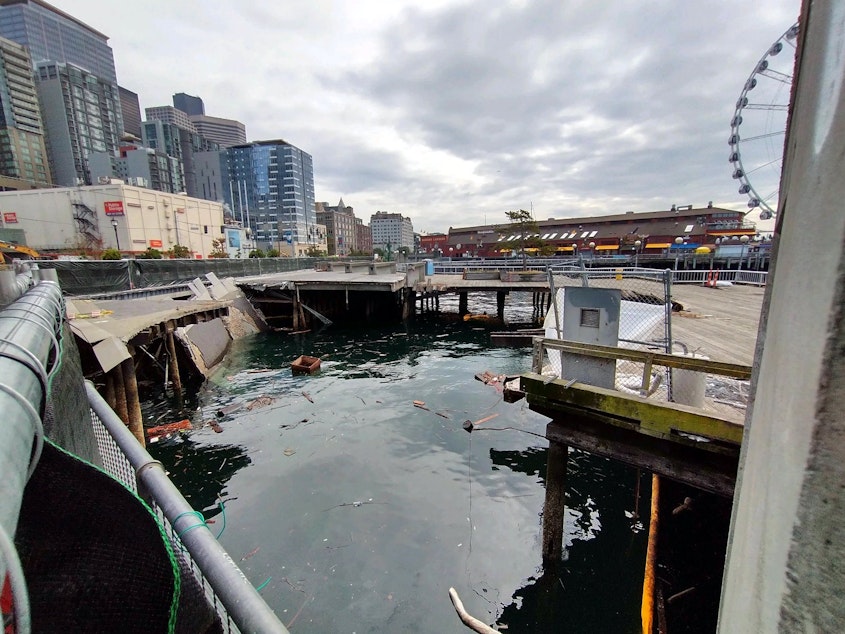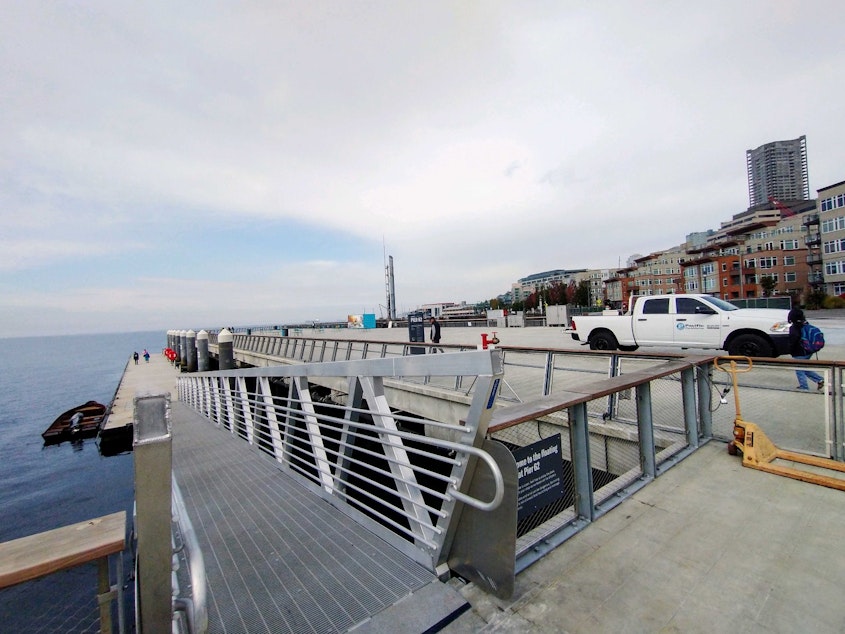On Seattle waterfront, old pier crumbles, new pier opens

We visit the structures beneath the old and new piers to see what's holding them up.
Engineers don’t like surprises. And they certainly don’t want another surprise like the catastrophic failure of part of Pier 58 during demolition, a collapse that threw two workers into the water (they escaped with only minor injuries).
To avoid any further surprises, one week after the collapse, engineers were still assessing whether it’s safe enough to resume demolition on Pier 58. And just to be extra cautious, they closed Pier 57, too, underneath the Great Wheel — not because there’s fear that it could collapse, but because it’s so close to Pier 57. Plus, the two piers are structurally tied together. Better safe than sorry.
On Monday, from the sturdy pier supporting the Seattle Aquarium, you could just see them scouring the older pier, checking for weaknesses. An orange vested worker walked up to a metal guardrail, and pushed on it several times. Another climbed over the guardrail and descended a ladder so he could see the underside of the pier.
Hanging there above the sea, he peered into the forest of creosote-impregnated wood pilings.

Sponsored
You can learn a lot by looking at the pilings that hold up these piers. But the conclusions aren’t always as obvious as you’d think.
For example, while those old wood creosote pilings do deteriorate over time, engineers have learned that they are not what caused part of Pier 58 to collapse.
Rather, it’s some relatively newer pilings that collapsed: steel tubes filled with concrete, according to Marshall Foster, from Seattle’s Office of the Waterfront and Civic Projects.
Generally, steel tubes are considered superior to creosote pilings, Foster said, because creosote pollutes the environment, and older wood pilings tend to be tightly spaced, sometimes as close as three or five feet apart, creating impenetrable shadows below that make poor habitat for fish.
But creosote pilings do have the advantage of deteriorating at a relatively predictable rate, Foster said. That means they seldom fail unexpectedly like the steel pilings did at Pier 58.
Sponsored

These days, when we build piers on steel pilings, we build them twice as big and we coat them with a special paint the helps them resist decay.
Just up the street, you can see the newer, beefier pilings underneath Pier 62.
Pier 62 is part of Seattle’s new waterfront. It’s so new, it just opened this past Sunday. After the pandemic, this pier will hold mega-concerts, farmers markets, and “food truck rodeos.”
You can see the support structure by descending onto a narrow floating dock immediately adjacent to the new park.
Sponsored

All the activity in that park bears on huge steel pilings that are 30 inches in diameter. That's more than twice as thick as the pilings that failed on Pier 58.
And because they're so big, they're spaced far apart. This allows more light to reach the floor, which is better for fish.
You might say the darkness under an older pier resembles a dense, dark forest, where all the trees are the same age. But the space beneath the new pier feels more like an old growth forest, or a cathedral. Sure, there's plenty of structure there, but it's spaced out in a way that some light gets through.

